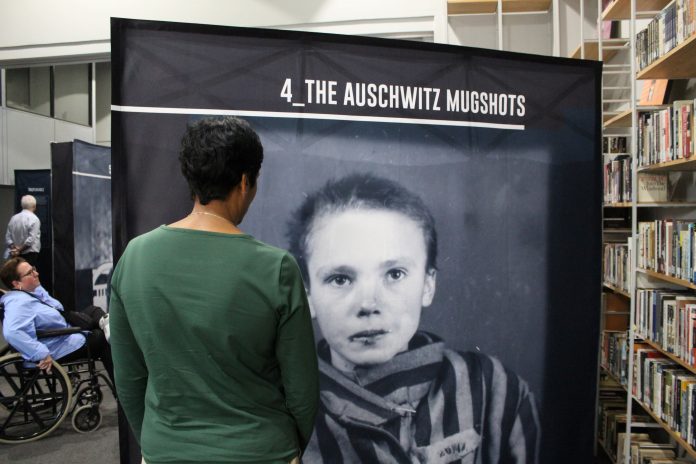The ”Seeing Auschwitz” exhibition opened its doors in Durban on Monday 24 April at the Durban Holocaust & Genocide Centre (DHGC), 44 KE Masinga Rd, Durban and will run until 20 August 2023. The exhibition, created by Musealia with the Auschwitz-Birkenau State Museum, in collaboration with the United Nations (UN) and UNESCO, and presented in Durban by the DHGC, will invite visitors to reflect on the true dimension of the horrors committed by Nazi Germany. Entry is free.
The exhibition uses analysis of the scarce photographic evidence of the camp that has survived to the present day as well as the process of the construction of the collective memory of Auschwitz and other contemporary genocides.
 ”Seeing Auschwitz” confronts the viewer with rare photographs captured by perpetrators, victims and liberators. The images provide unsettling perspective and stark evidence of mass murder, but also of the humanity of the people who perished there. The vast collection of images come from varying sources including aerial allied pictures of the camps (many taken by South African Air Force’s 60 Squadron, one of the leading aerial photographic units operating in Europe during the war), documentation of the deportation process and living within Auschwitz as well as insight into life before the camps.
”Seeing Auschwitz” confronts the viewer with rare photographs captured by perpetrators, victims and liberators. The images provide unsettling perspective and stark evidence of mass murder, but also of the humanity of the people who perished there. The vast collection of images come from varying sources including aerial allied pictures of the camps (many taken by South African Air Force’s 60 Squadron, one of the leading aerial photographic units operating in Europe during the war), documentation of the deportation process and living within Auschwitz as well as insight into life before the camps.
The exhibition presents more than 100 images of victims and perpetrators, as well as snapshots of the systematic extermination process and scenes of everyday life in Auschwitz, mostly immortalized by the SS perpetrators themselves and audiovisual testimonies of survivors. These provide unequivocal evidence of the crimes committed at Auschwitz and, at the same time, present a great challenge to the viewer.
Lead curator and one of the world’s leading experts on the Holocaust, Paul Salmons says: “They look like faithful portraits of an instant, but these photographs are not neutral sources at all: we are looking at a piece of reality but seen from the Nazi perspective. It is necessary to stop and analyze them to really see what each image truly reveals, not only about the place and the moment, but also about their own authors, the people portrayed, and even about ourselves as viewers”.
The contents of the exhibition have been developed by Musealia and their team of experts lead by curator Paul Salmons, so that each visitor can get the most out of their visit and understand the facts presented in the exhibition regardless of their prior historical knowledge.
 Director of Musealia, Luis Ferreiro says: “Memory, both individual and collective, is largely formed through images. In the case of Auschwitz, this is especially problematic, given its provenance. This is what we wanted to explore in this exhibition, which also allows us to extend our gaze to the present, to question ourselves if we have really known how to see Auschwitz after everything that happened from 1945 onwards”.
Director of Musealia, Luis Ferreiro says: “Memory, both individual and collective, is largely formed through images. In the case of Auschwitz, this is especially problematic, given its provenance. This is what we wanted to explore in this exhibition, which also allows us to extend our gaze to the present, to question ourselves if we have really known how to see Auschwitz after everything that happened from 1945 onwards”.
The ”Seeing Auschwitz” exhibition has been conceived and created by the Spanish company Musealia together with the Auschwitz-Birkenau State Museum in Poland. It was originally developed for the United Nations’ observance of the International Day of Commemoration in memory of the victims of the Holocaust, and exhibited at UN Headquarters, New York, UNESCO Headquarters, Paris and United Nations Information Offices worldwide.
To make a booking for a guided tour, please visit: https://dbnholocaust.co.za/seeingauschwitz/






